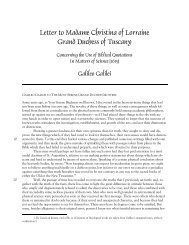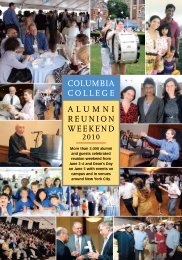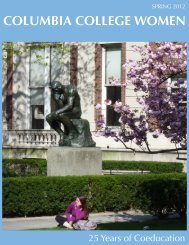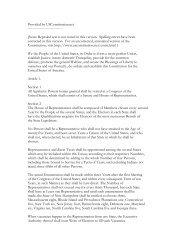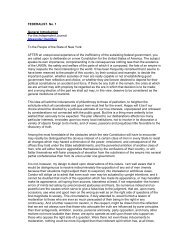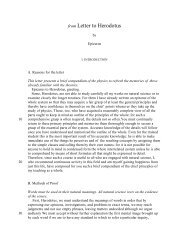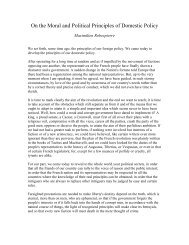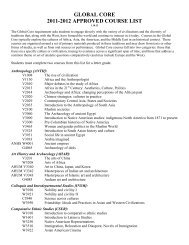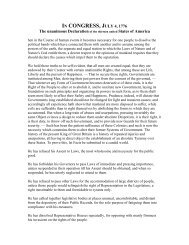Japan Storm - Columbia College - Columbia University
Japan Storm - Columbia College - Columbia University
Japan Storm - Columbia College - Columbia University
You also want an ePaper? Increase the reach of your titles
YUMPU automatically turns print PDFs into web optimized ePapers that Google loves.
COLUMBIA COLLEGE TODAY JAPAN AFTER THE STORM<br />
When Keene taught his final class at <strong>Columbia</strong> last spring, it was a major event for the <strong>Japan</strong>ese news media.<br />
PHOTO: EILEEN BARROSO<br />
tions of Keene’s <strong>Columbia</strong> graduate students have gone on to<br />
prominence in <strong>Japan</strong>ese literature, among them such leading<br />
lights as Karen Brazell ’69 GSAS, Susan Matisoff ’73 GSAS and J.<br />
Thomas Rimer ’71 GSAS. Students of Keene also were among the<br />
first female tenured professors in the field, Gluck points out. Not<br />
that Keene was inclined to make such distinctions. “He encouraged<br />
all of us equally,” she says. “So as women we didn’t feel at<br />
all disadvantaged.”<br />
Keene’s passion and feeling for the subject, his depth of understanding<br />
and his prodigious hard work all contribute to the<br />
respect and warmth so many feel for him. “He’s very close to<br />
you when he speaks about <strong>Japan</strong>ese literature,” Gluck says. “You<br />
don’t feel like it’s a kind of knowledge. His generosity and spirit,<br />
combined with his delight in <strong>Japan</strong>ese literature, generates affection<br />
even in people who are very shy and think he’s a great man.<br />
There’s no space between him as a teacher and his subject, and<br />
you as students.”<br />
After a round of tributes and symposia last spring — covered<br />
by dozens of <strong>Japan</strong>ese reporters and camera crews<br />
— Keene spent the summer preparing to move from spacious<br />
faculty digs on Riverside Drive to a modest Tokyo apartment,<br />
where he’s finishing a book about 19th-century poet Shiki<br />
Masaoka. “My apartment is in a quiet neighborhood where I’ve<br />
lived a long time, so people are accustomed to seeing me there.<br />
These streets are narrow and they’re not meant for cars, and you<br />
can walk pleasantly,” Keene says. “And having become very <strong>Japan</strong>ese<br />
in my attitudes, I feel happier there.”<br />
The subtle virtues of <strong>Japan</strong>ese culture — and the challenges of<br />
translating and communicating its beauty — continue to animate<br />
Keene.<br />
WINTER 2011–12<br />
33<br />
“The <strong>Japan</strong>ese language is characterized among other things<br />
by evocative vagueness,” he says. “You try to avoid being too precise.<br />
I used to write to a <strong>Japan</strong>ese friend, and he would send back<br />
my letters with things crossed out or changed. If I said ‘I’ve been<br />
sick for four days,’ he would correct me: ‘You should say “about<br />
four days,” or “four or five days.” We <strong>Japan</strong>ese never say “four.”<br />
We never say “five.”’ And it’s true. There’s a liking for a fuzziness,<br />
which the <strong>Japan</strong>ese find more exciting because it leaves space for<br />
the imagination.”<br />
Having witnessed <strong>Japan</strong>’s rebirth after the catastrophes of<br />
WWII, Keene has faith that his adopted country will heal from<br />
this year’s natural disasters.<br />
“In 1955 I took a journey to the northern parts of <strong>Japan</strong>, which<br />
was the same one that had been taken in 1689 by the great <strong>Japan</strong>ese<br />
poet Basho,” Keene says. The haiku master was particularly<br />
inspired by Matsushima Bay, with its hundreds of tiny, pine-clad<br />
islands.<br />
After the Tohoku earthquake of March 11, a monster tsunami<br />
wreaked destruction along that coast, killing thousands. When<br />
Keene heard the news, his first concern was for the well-being of<br />
his many <strong>Japan</strong>ese friends. But his thoughts also turned to Matsushima’s<br />
delicate islands.<br />
“I wondered what had happened to that,” Keene says. “And I<br />
was told that the tsunami cut the pines down, but their roots are<br />
still there, and they can hope that in 20 years or so, the islands will<br />
be covered with trees again.”<br />
Former CCT editor Jamie Katz ’72 has held senior editorial positions at<br />
People and Vibe magazines and now writes for Smithsonian Magazine,<br />
among other publications.




